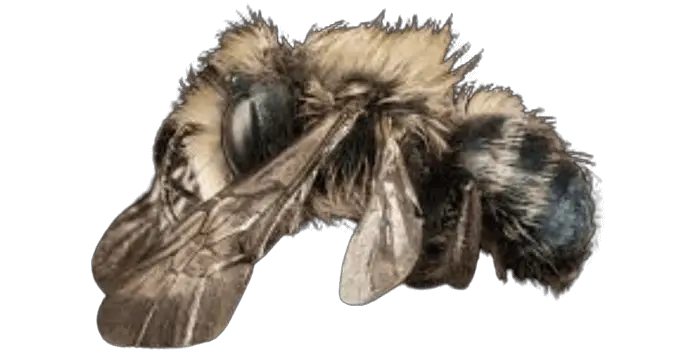There are many mason bees, and Osmia californica is one of the special mason bees. Osmia is usually found in North America and Canada. These bees are efficient pollinators and are valued for their ability to pollinate crops, gardens, and orchards. However, like many other species of bees, populations of Osmia have been declining due to habitat loss, pesticide use, and other environmental factors. Read below to get more information about Osmia californica.
| Scientific name | Osmia Californica |
| Family | Megachilidae |
| Order | Hymenoptera |
| Class | Insecta |
| Genius | Osmia |
Interesting facts about Osmia Californica
This species of bee has a black body covered with hairs. They are different from other bees in solitary conditions but easily connect with other bees. Californica and house flies have the same body size which is an interesting fact. But that doesn’t mean they belong to the housefly family. Their family is Megachilidae. Californicas are less aggressive in sting habits.
Osmia californica Pollination
One of the best pollinations from bees is buzz pollination. If I say Osmia californica does buzz pollination, it is not wrong. Because they do Pollination like mason bees, but Their pollination habits are different from other bees. They pollinate every plant, flower, and fruit they like. Some Favorite pollination factors are melons, Carrots, and blueberries.
Do Osmia Californica make Honey?
Mason Bee, also known as the California mason bee, is a type of solitary bee that does not produce honey. Instead, they gather nectar and pollen to provision their nests for their young. Unlike honeybees, which are social bees that live in large colonies, Osmia californica bees live and nest alone. They build their nests in small cavities, such as in stems, reeds, or holes in wood, and lay a single egg in each cell, provisioning it with food for the developing larva.
Types of Osmia bees
- Osmia bicornis
- Osmia lignaria
- Osmia cornifrons
- Osmia rufa
- Osmia californica
- Osmia ribifloris
- Osmia aglaia
- Osmia niveata
- Osmia caerulescens
- Osmia chalybea
Honey Bee vs Californica Bee, which is the Best Pollinator.
I like to describe the sharp differences between honey and Osmia bee pollination. According to USDA, In a single day, Honey bees visit 500 to 1200 flowers. Still, Osmia bees visit 15,000 to 20,000 flowers which is a big difference of 30%. But Honey bee pollination is better than other bees.
Osmia californica Nests
Unlike honey bees, Osmia bees create their nest during the Winter season. They build nests in the ground and wood. Their nests are called nest tubes. These bees build their own nests for a very long time.

Osmia californica bees lay their eggs in the available soil, which is different from mason bees because mason bees lay eggs in mud.
Do Californica bees survive in winter?
Usually, we know that every bee species does not like winter because they cannot live in the cold season. But Californica is the only bee that can survive in the cold. They have the ability to survive below 40°F. But their cocoons cannot survive at this temperature. If you have these bees, you need to harden your bees by growing them in cold weather.
History of Osmia Californicas bees
We know that honeybees are a species that has lived in our ecosystem for thousands of years. Scientists have discovered many bee species over time. Osmia californica was discovered in 1864. It means the history of this bee is so old, which increases our interest. Osmia were first discovered in the United States, so they are the native bee in America.
FAQ’S
What is Scientific name of Osmia Californica?
Californica bee belong with Megachilidae family or Mason bee.
When was Osmia californica Discovered?
Osmia bee Californica was first discorved in 1964.
Conclusions
It is interesting to learn about the history of bees, especially californica bee. Working with bees is a secret fact. Californica bee is the type of mason bee. After reading this article, you can disprove anything about Osmia.
